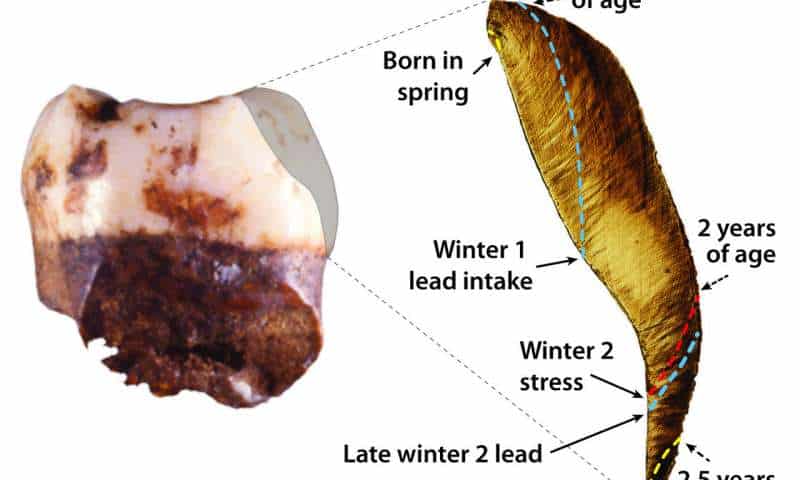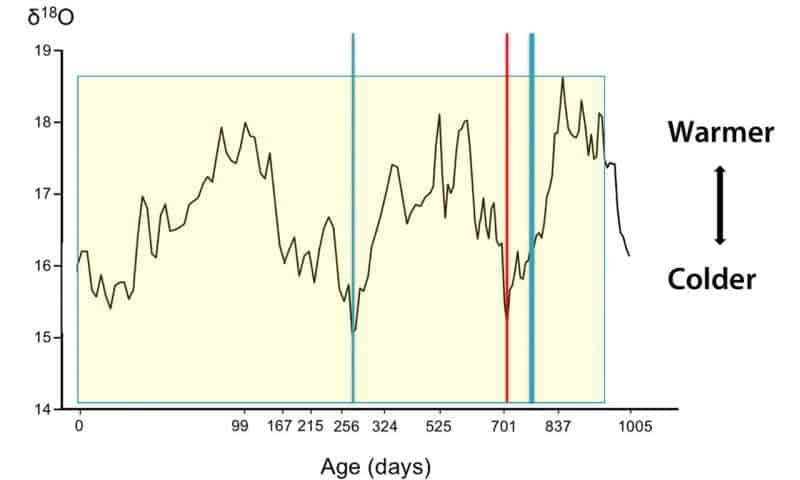
There’s much we don’t know about how our close cousins, the Neanderthals, lived and interacted among themselves. A one-of-a-kind new study is filling in the blanks, providing unprecedented insight into the lives of Neanderthal children. The teeth of two juveniles who lived 250,000 years ago in France suggest that their childhoods were pretty rough, going through much harsher winters than modern humans had experienced. They even were exposed to lead poisoning — the first such instance recorded in a human relative. But despite the numerous hardships, their mothers seem to have done the very best they could.
Nursing Neanderthal kids
The fossilized teeth belonging to the two Neanderthal children were recovered Payre, a site in the Rhone Valley, southeast France. Tanya Smith, a biological anthropologist at Griffith University in Australia, along with colleagues performed a CT scan of the remains and then cut each tooth into thin slices. Like tree rings, teeth record the diet as well as the climate of the individual in each daily growth line of enamel. The results were then compared to the teeth of a modern human child who lived 5,400 years ago at the same site.
Barium isotopes — a marker for milk consumption — told Smith and colleagues that the Neanderthal young were nursed by their mother until they were 2.5 years of age. According to the research team, that’s about just as long as modern humans in hunter-gatherer societies nurse their babies.
The ratio of different isotopes of oxygen found in the layers of the children’s teeth shows that the Neanderthal young lived through colder winters and more seasonal variation in climate than modern humans who lived more recently at the same site. This assertion fits with evidence that scientists previously gathered suggesting that modern humans lived through a much stabler climate in the past 10,000 years.

“Our approach is based on the fact that two naturally-occurring atomic variants of oxygen vary in predictable ways. During prolonged periods of warm weather, surface water is higher in the heavy variant of oxygen. The opposite pattern occurs during cool periods. When individuals drink from streams or pools of water, values from these sources are recorded in the hard mineral component of forming teeth,” Smith wrote in The Conversation.
The children were exposed to lead at least twice during their early lifetimes, likely due to food and water with contaminants from nearby lead mines, only 25 kilometers from the archaeological site.
Although the researchers didn’t study adult remains, the findings nevertheless tell us quite a lot about some invisible heroes — the Neanderthal mothers who, despite great hardship, took care of their young as best as they could, perhaps nursing them as carefully as human mothers would.
In the future, the researchers plan on performing the same dental thinning and isotope analysis technique on other specimens and even other types of humans.
“Traditionally, people thought lead exposure occurred in populations only after industrialization, but these results show it happened prehistorically, before lead had been widely released into the environment,” Christine Austin, Assistant Professor at the Icahn School of Medicine at Mount Sinai and co-author of the new study, said in a statement. “Our team plans to analyze more teeth from our ancestors and investigate how lead exposures may have affected their health and how that may relate to how our bodies respond to lead today.”
“Dietary patterns in our early life have far reaching consequences for our health, and by understanding how breastfeeding evolved we can help guide the current population on what is good breastfeeding practice,” said Manish Arora, Professor and Vice Chairman Department of Environmental Medicine and Public Health at the Icahn School of Medicine. “Our research team is working on applying these techniques in contemporary populations to study how breastfeeding alters health trajectories including those of neurodevelopment, cardiac health and other high priority health outcomes.”
The findings appeared in the journal Science Advances.






